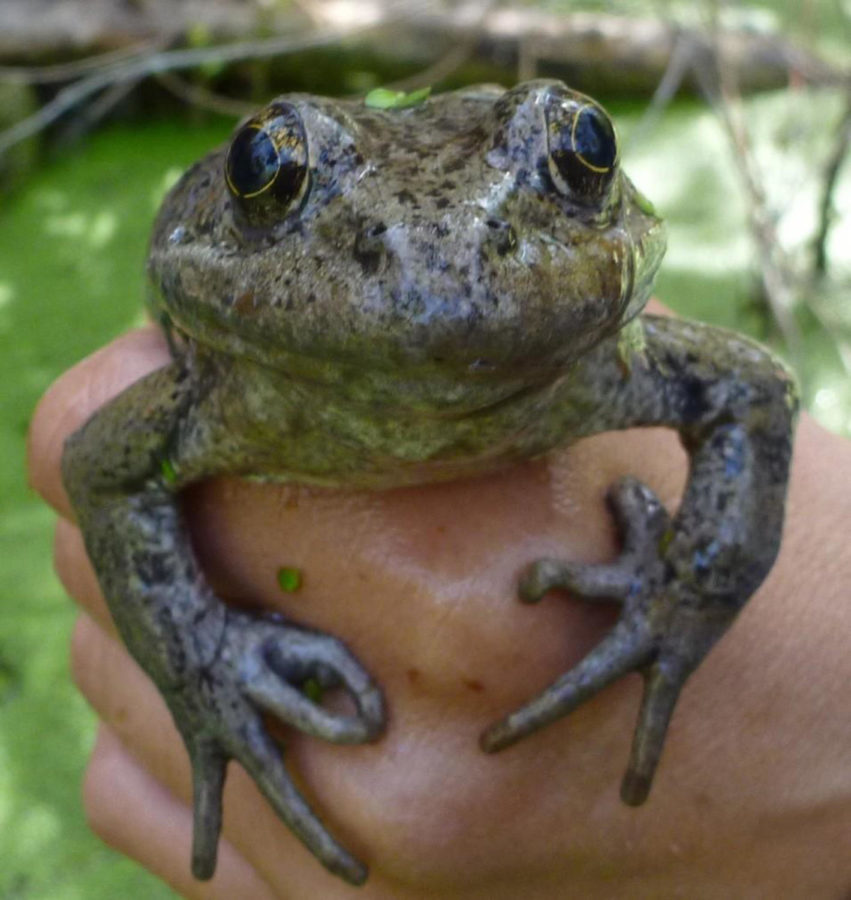Conservationist and biologist Dr. Anny Peralta-Garcia discussed the importance of the California red-legged frog as part of Mesa’s Spring 2021 STEM Lecture Series on May 4. The event was widely praised by students and faculty, and garnered nearly 100 attendees.
Peralta-Garcia, who with the continued help of the Baja California Red-Legged Frog Working Group, has repopulated and translocated large numbers of the Rana draytonii, more commonly referred to as the California red-legged frog, to their native habitats.
“I’ve known Anny for almost as long as I’ve been in San Diego,” Mesa biology professor Dean Leavitt said of his former graduate school colleague Peralta-Garcia. “[H]er true love, as far as research goes, is amphibians.”
Throughout her presentation, Peralta-Garcia, who was recently named a National Geographic Explorer, explicitly outlined the group’s efforts to successfully regenerate the red-legged frog population in a commitment to restore California’s decimating watershed ecosystems.
More importantly, Peralta-Garcia’s discourse discussed the restoration efforts to the red-legged frog’s watershed habitats that are threatened by various environmental menaces. This includes, but is not limited to, colonial over-harvesting, climate change and exotic predatory species occupying the habitat areas.
“Of the 14 exotic species [that live in red-legged frog territory], 68% of those are considered invasive, and this means that these really have a high impact in the ecosystem,” Peralta-Garcia said of one of the impeding factors threatening the habitat of the red-legged frog. “The fact is that we do have a lot of these invasive species in watersheds in Baja California. If we want to help red-legged frogs, we need to get rid of those.”
Peralta-Garcia and the Baja California Red-Legged Frog Working Group are not only reintroducing the frog populations to their natural environment, but are also closely monitoring the reproduction cycles of the red-legged frogs in order to ensure their survival for generations to come.
“We took data on how deep the egg masses were or how downstream they were just to learn about where the frogs like to lay their eggs. We’re super happy because this year, three years after we built our ponds, we finally see the results,” Peralta-Garcia added of the observational efforts.
Thanks to Peralta-Garcia and colleagues, in December 2020, for the first time in 20 years, 60 juvenile red-legged frogs were seen in Southern California.
“I can say that it was totally a success,” Peralta-Garcia said upon completion of the project. “We have to continue doing pond building and maintenance in Baja California. This is just one side, there are nine more [habitats] where frogs need help, so we still have a lot of work to do.”
In regards to the wide reception of the STEM Lecture Series, Physical Sciences Department Chair Don Barrie commented. “Thanks to our wonderful students, the Spring 2021 STEM Lecture Series was a huge success. Over 500 students attended lectures this spring, and students have told me they really appreciate being able to watch video recordings of lectures after each event.”
Those interested in viewing recordings of previous events, can access the digital master list of the STEM Lecture Series.




